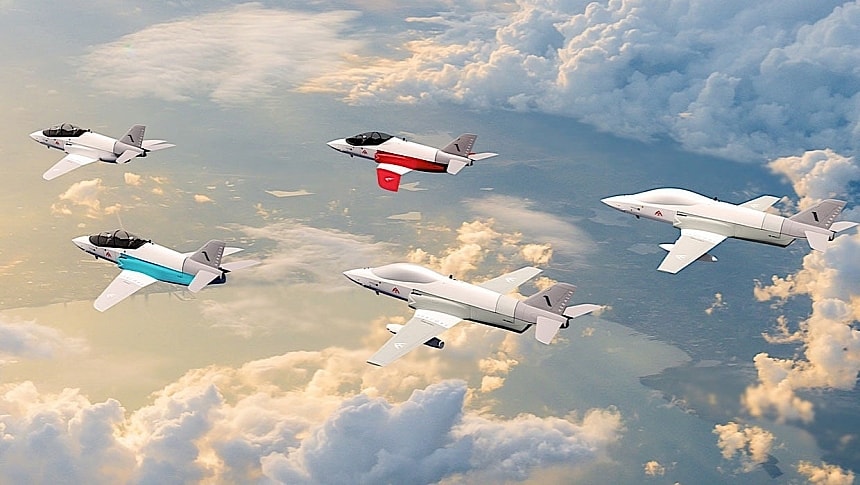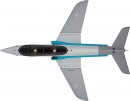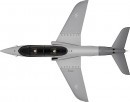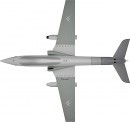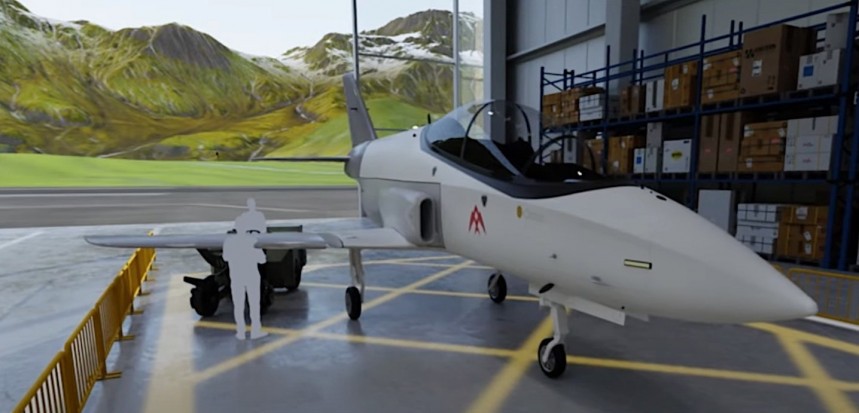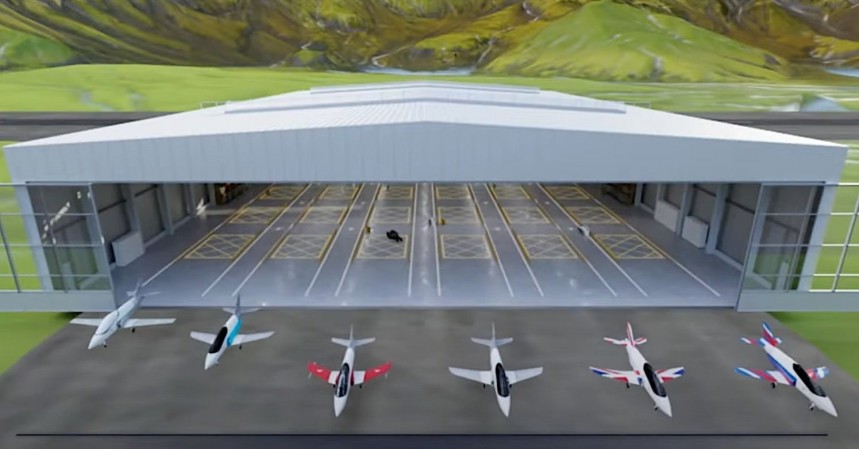For several years now there has been talk over in Britain's (and the world's) aviation circles of a new kind of aircraft that could completely reshape what it means to operate a fleet of aircraft. It's a modular piece of flying machine that could form the basis of something its makers call a commercial air force - a fleet of aircraft that is free from the burdens of fleet management and fixed point capital expense with low return.
The company that fuels this talk is called Aeralis, and we've talked about it on several occasions before here on autoevolution. Or, to be more precise, we had a look at its product, a jet that has the ability to morph into a different kind of aircraft depending on the needs of its operators.
The idea behind the Aeralis jet is so simple one has to wonder how come no one has ever thought about it before: why not build a common platform and adapt that to whatever the needs of the moment are, instead of building several different aircraft to perform the roles?
The platform currently being researched by the company is called Common Core Fuselage. On it, Aeralis plans to fit "a first-of-its-kind wing architecture" (comprising an inner and an outer wing) that should allow the plane to be reconfigured to play one of five different roles: Advanced Jet Trainer, Aggressor, Companion, ISTAR, and Tanking (there are indications some other roles are in the pipeline for the plane as well).
The design of the wing should also allow high maneuverability regardless of speed, no matter the version. Also, all variants of the jet will use commercial off-the-shelf landing gear, allowing them to reach new levels of efficiency in terms of build and cost.
The really interesting part about all this is that a change of role for the aircraft could be performed rather rapidly. In a bid to give us a clearer picture of that, Aeralis released last week a video detailing how this whole reconfiguration business will unfold.
A huge hangar with six maintenance lines is shown. Airplanes come into the hangar through one of the hangar's doors, and depending on what work they need to be done, they position themselves over one of the six lines.
Three of these lines are dedicated to reconfiguration. Say a jet of this kind lands as a reconnaissance single-seater, but needs to be converted into a two-seater trainer, or perhaps into a crewless drone: the hangar's dedicated lines are where the magic happens.
In a nutshell, there are several operations Aeralis envisions as mandatory for a successful reconfiguration. First, the plane is washed and triaged. Then, the modules it no longer needs are removed, and the plane moves to the engine configuration bench.
Then comes a rework of the wings and empennage, cockpit and mission suite, and, finally, the testing of the modifications made, including a visual inspection of the potentially new decals that have been added.
The remaining three lines are tasked with the maintenance of the existing Aeralis fleet that does not need reconfiguration. That means anything from repairs to replacement of damaged parts is done here.
You can get a sense of what all of the above means in the CGI video shown beneath this text. And it all looks pretty impressive, leaving us with one crucial question: how close to reality are the Aeralis jets?
Back in November 2023 the company revealed which variant of the jet would be made first. It's the Advanced Jet Trainer, which in its first test configuration was named, with the help of a contest that saw no less than 800 ideas being submitted by Royal Air Force (RAF) cadets, the Phoenix.
Why RAF cadets? The plane and its many incarnations are, first and foremost, intended to be military aircraft, with a great emphasis on training duties. It will, however, also be capable of supporting the installation of electronic warfare hardware and a full combat radar in its nose. It's unclear at this point what weapons it will be capable of carrying, if any.
As for what will power the jet, things are not entirely clear at this point. We know for a fact the engines that will be used will be sourced from Rolls-Royce, but the exact model is not known.
As for capabilities, nothing is certain at the time of writing. The Aeralis jet will most likely not be able to fly supersonic, but it will come pretty close to the speed of sound.
The Aeralis idea seems too good to come true anytime soon, and for all intents and purposes it is. The company avoids saying anything about the date of the plane's first flight, leaving us to hope (and speculate) that we just might reach that point by the end of the current decade.
The idea behind the Aeralis jet is so simple one has to wonder how come no one has ever thought about it before: why not build a common platform and adapt that to whatever the needs of the moment are, instead of building several different aircraft to perform the roles?
The platform currently being researched by the company is called Common Core Fuselage. On it, Aeralis plans to fit "a first-of-its-kind wing architecture" (comprising an inner and an outer wing) that should allow the plane to be reconfigured to play one of five different roles: Advanced Jet Trainer, Aggressor, Companion, ISTAR, and Tanking (there are indications some other roles are in the pipeline for the plane as well).
The design of the wing should also allow high maneuverability regardless of speed, no matter the version. Also, all variants of the jet will use commercial off-the-shelf landing gear, allowing them to reach new levels of efficiency in terms of build and cost.
The really interesting part about all this is that a change of role for the aircraft could be performed rather rapidly. In a bid to give us a clearer picture of that, Aeralis released last week a video detailing how this whole reconfiguration business will unfold.
A huge hangar with six maintenance lines is shown. Airplanes come into the hangar through one of the hangar's doors, and depending on what work they need to be done, they position themselves over one of the six lines.
In a nutshell, there are several operations Aeralis envisions as mandatory for a successful reconfiguration. First, the plane is washed and triaged. Then, the modules it no longer needs are removed, and the plane moves to the engine configuration bench.
Then comes a rework of the wings and empennage, cockpit and mission suite, and, finally, the testing of the modifications made, including a visual inspection of the potentially new decals that have been added.
The remaining three lines are tasked with the maintenance of the existing Aeralis fleet that does not need reconfiguration. That means anything from repairs to replacement of damaged parts is done here.
You can get a sense of what all of the above means in the CGI video shown beneath this text. And it all looks pretty impressive, leaving us with one crucial question: how close to reality are the Aeralis jets?
Back in November 2023 the company revealed which variant of the jet would be made first. It's the Advanced Jet Trainer, which in its first test configuration was named, with the help of a contest that saw no less than 800 ideas being submitted by Royal Air Force (RAF) cadets, the Phoenix.
As for what will power the jet, things are not entirely clear at this point. We know for a fact the engines that will be used will be sourced from Rolls-Royce, but the exact model is not known.
As for capabilities, nothing is certain at the time of writing. The Aeralis jet will most likely not be able to fly supersonic, but it will come pretty close to the speed of sound.
The Aeralis idea seems too good to come true anytime soon, and for all intents and purposes it is. The company avoids saying anything about the date of the plane's first flight, leaving us to hope (and speculate) that we just might reach that point by the end of the current decade.
